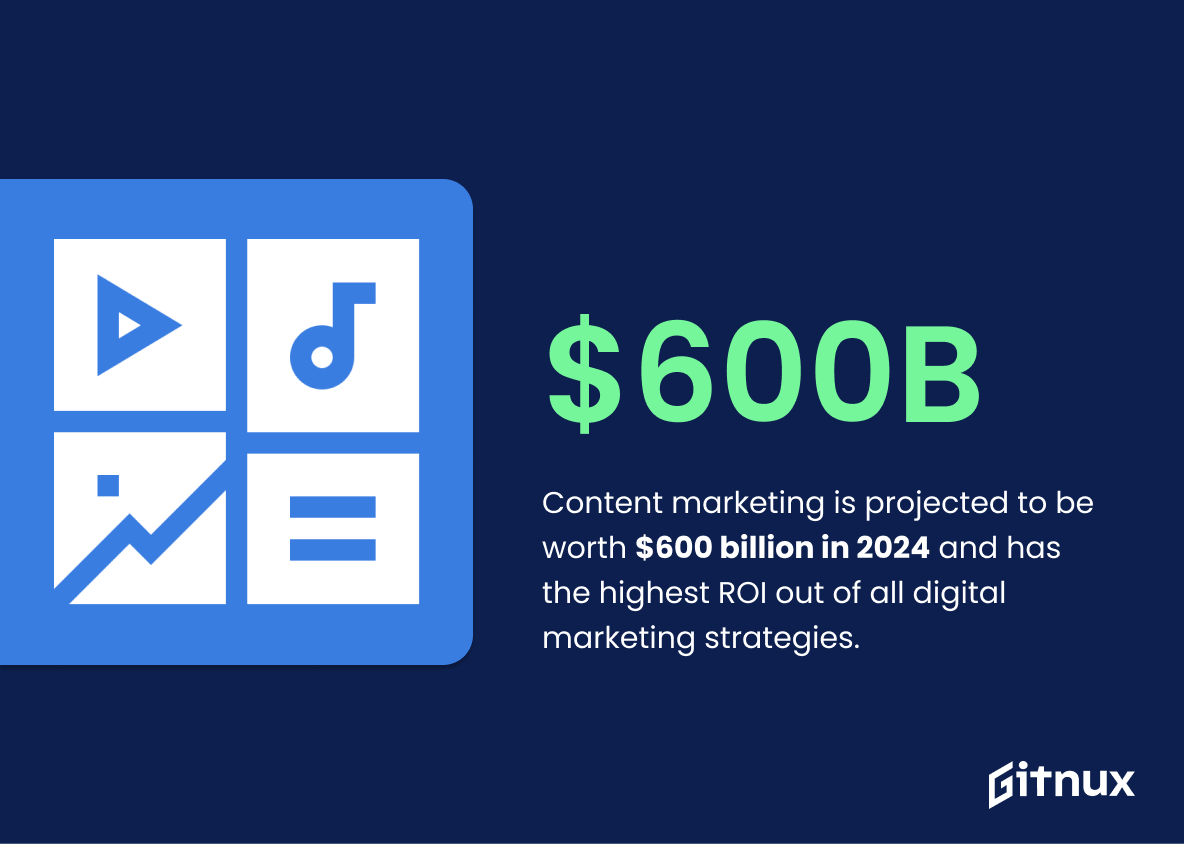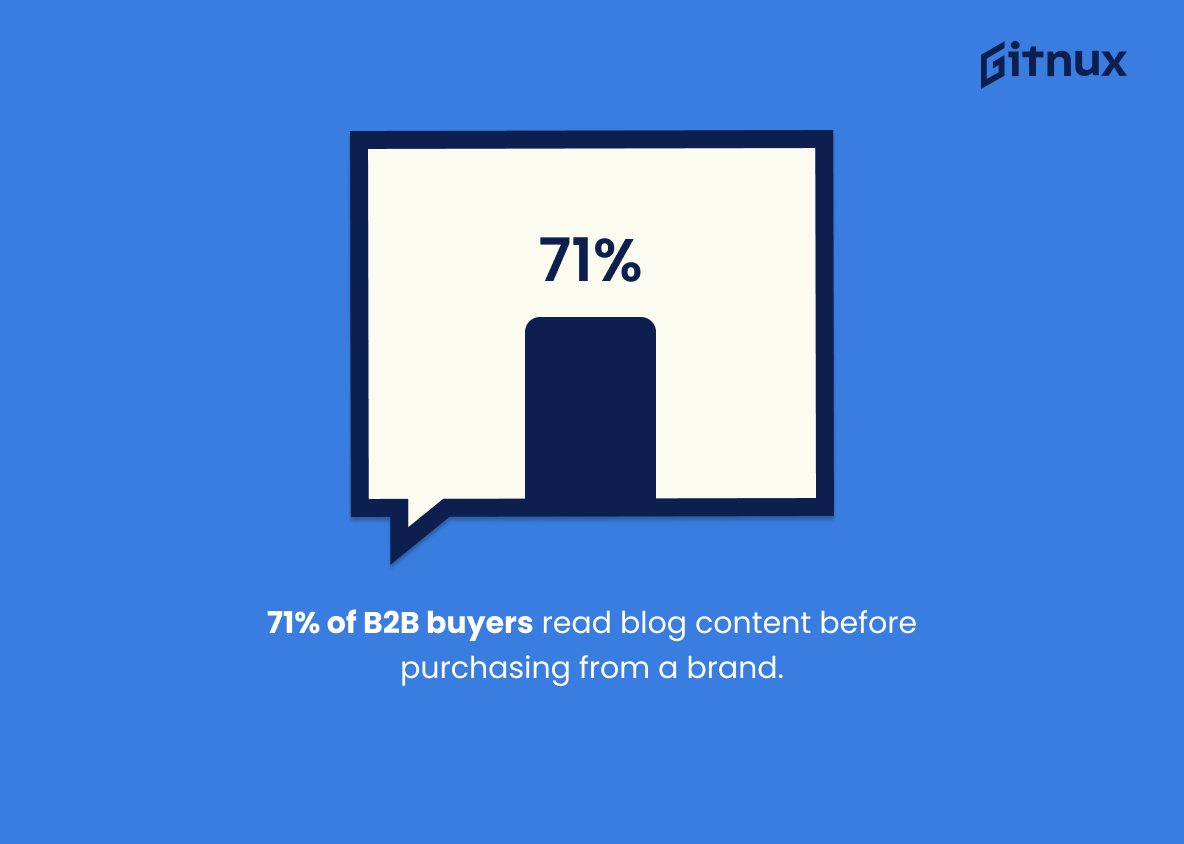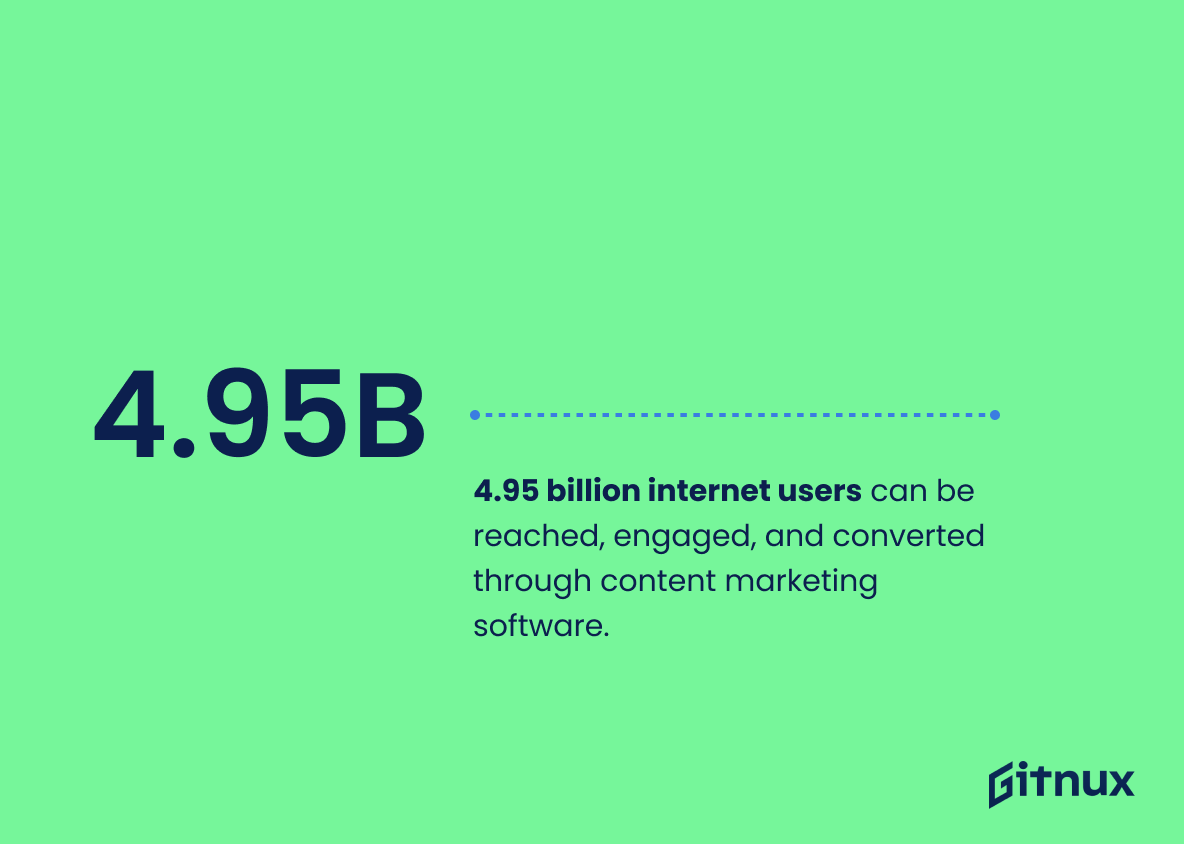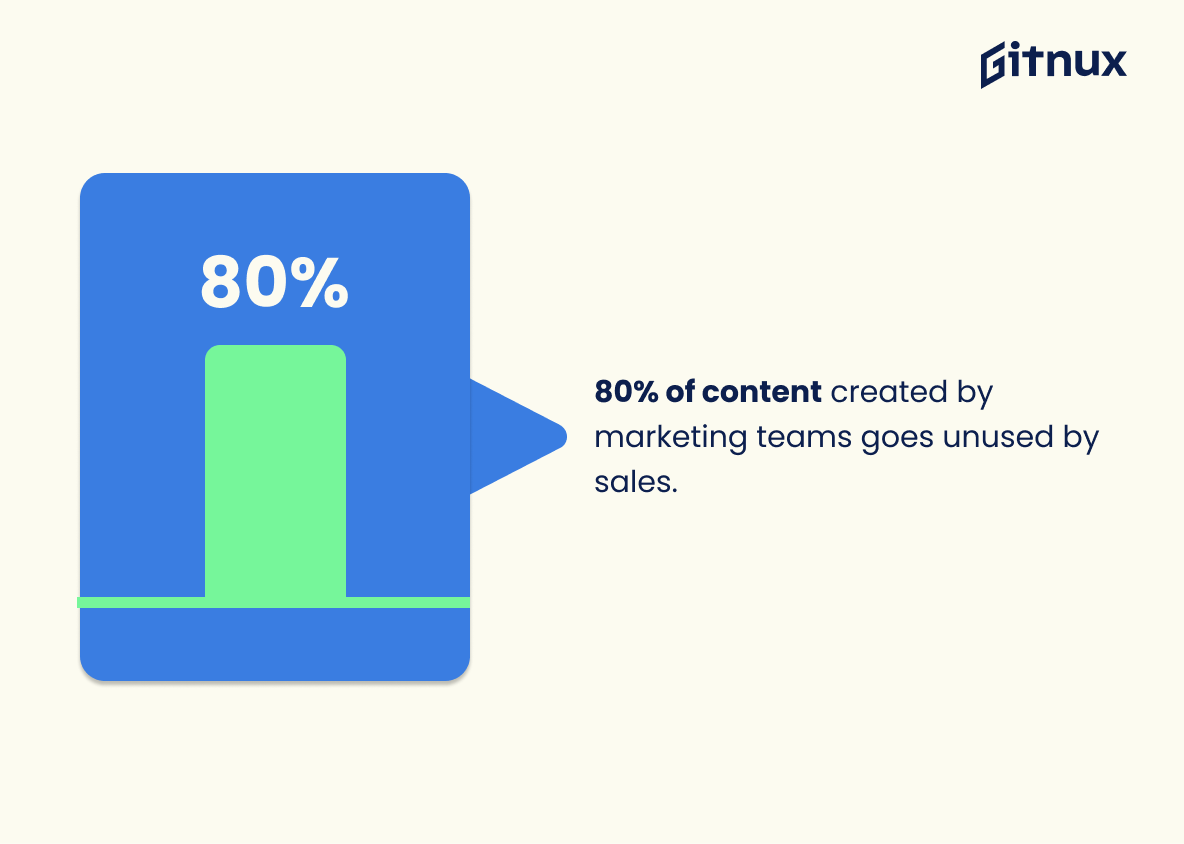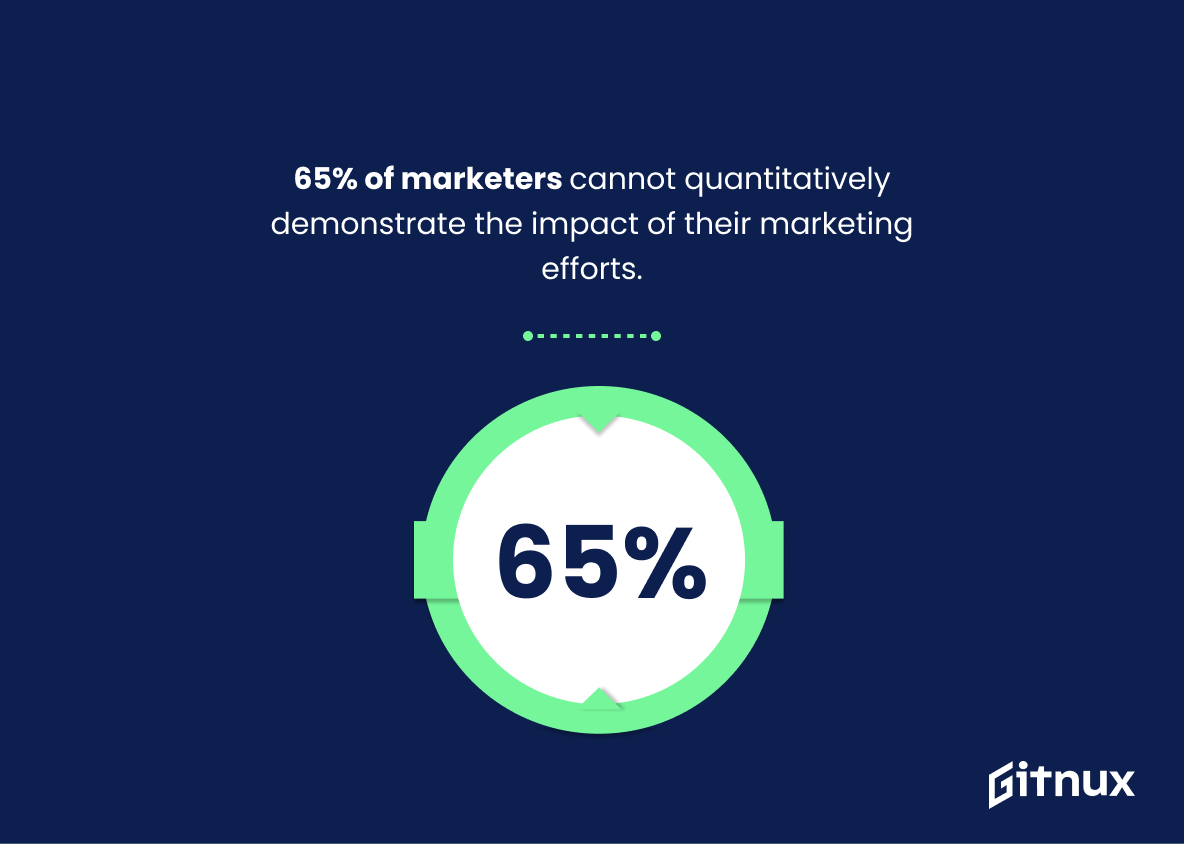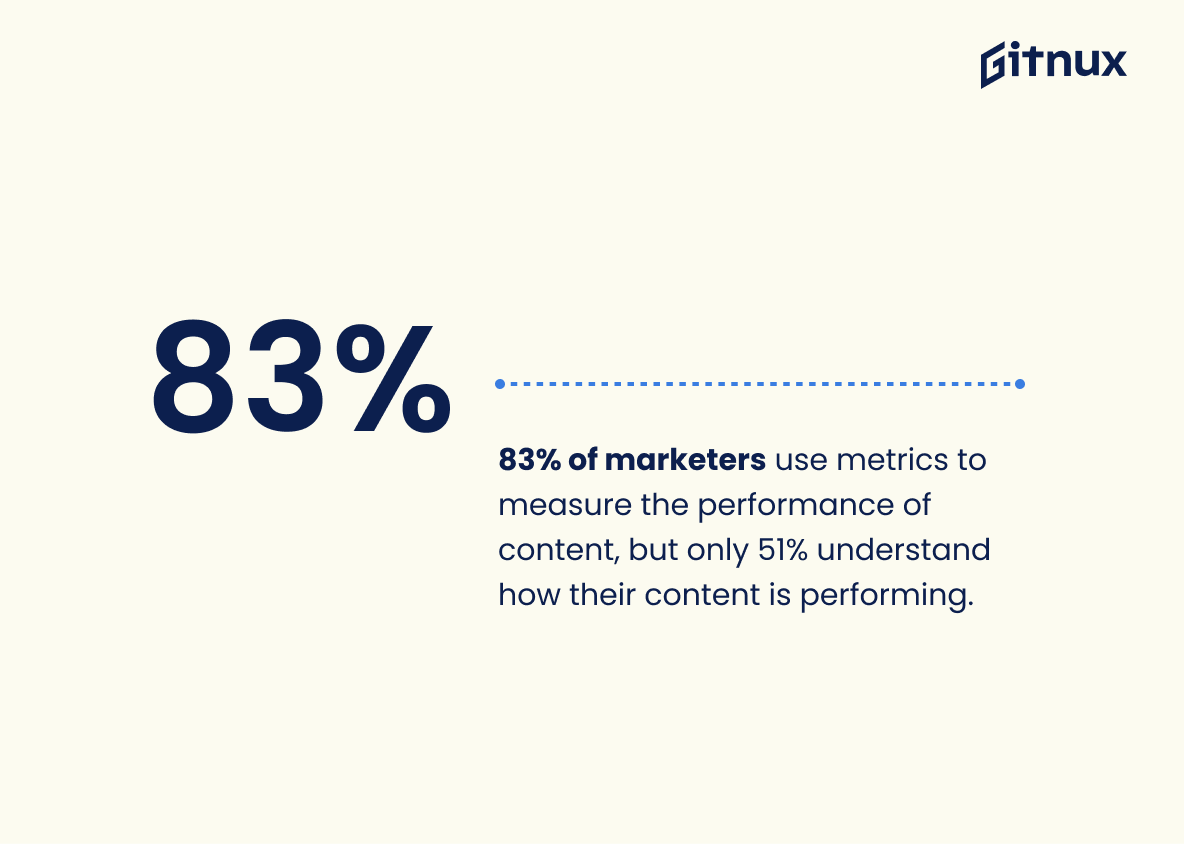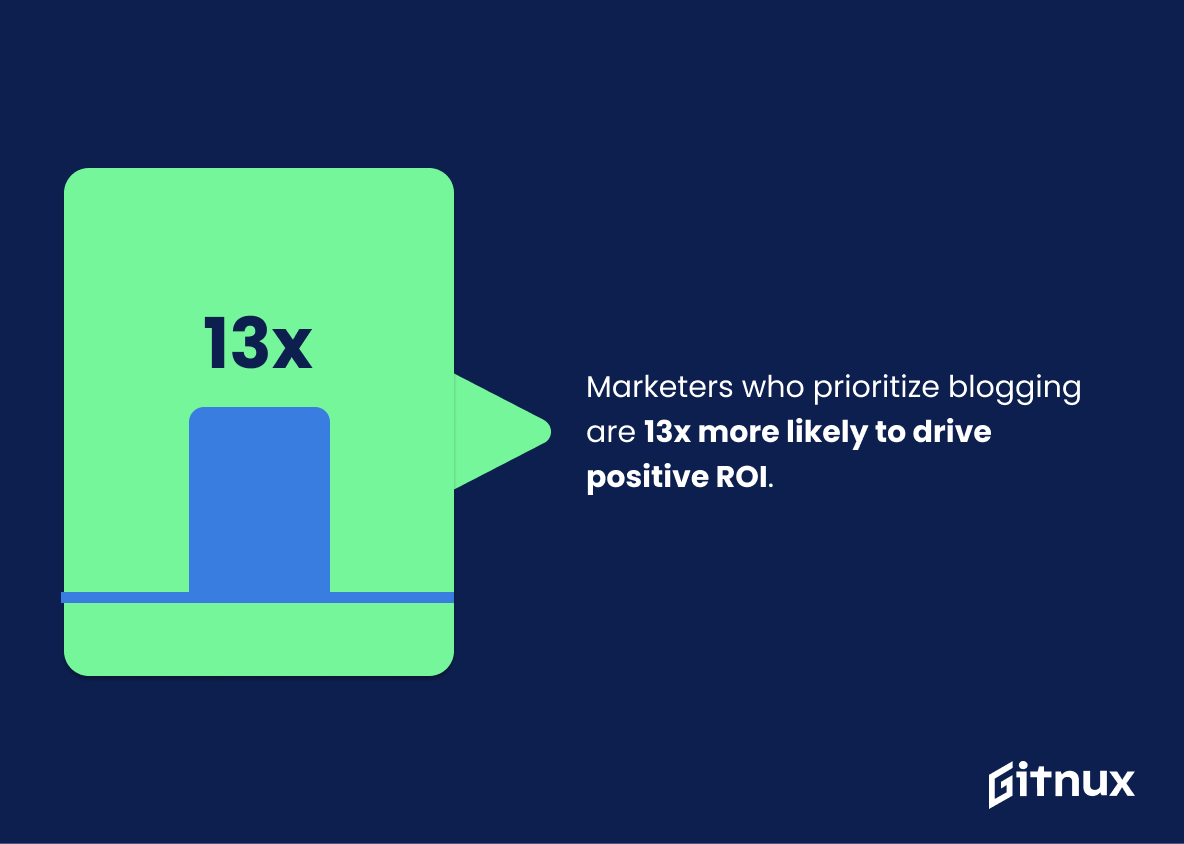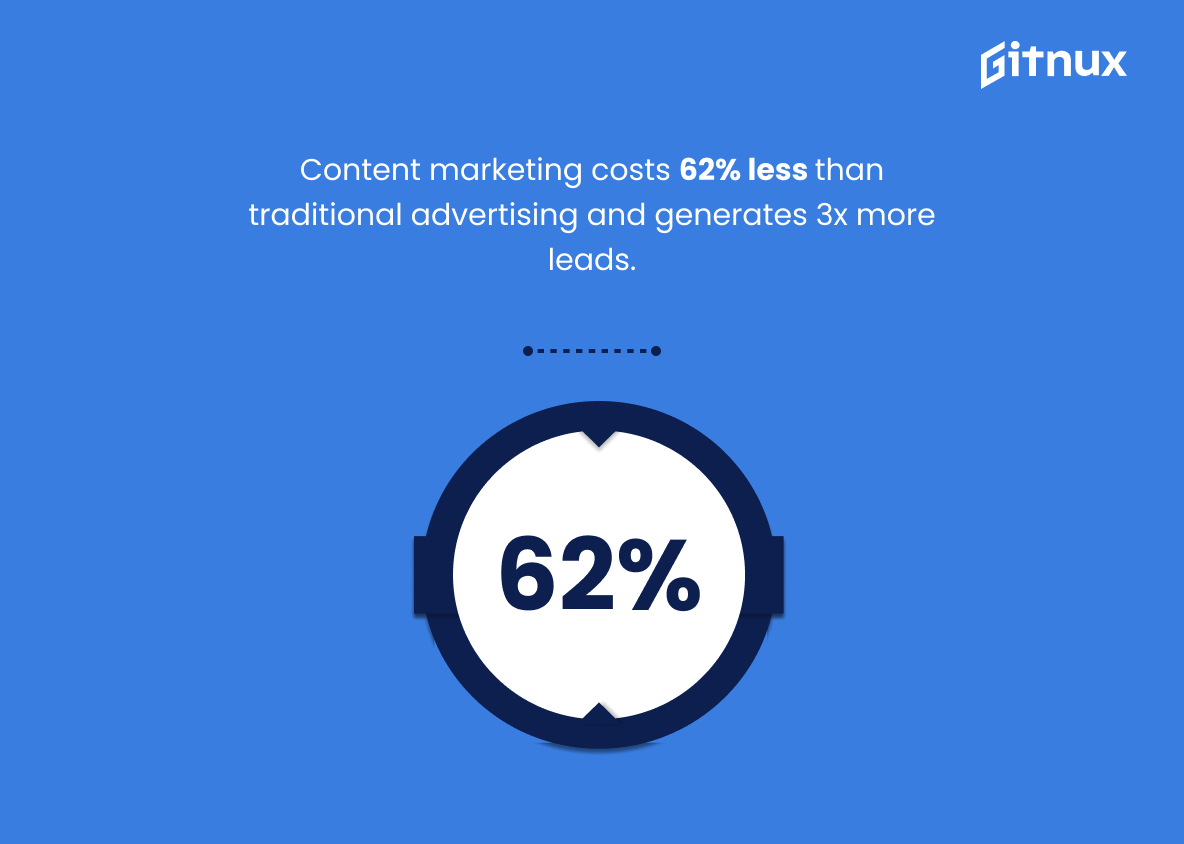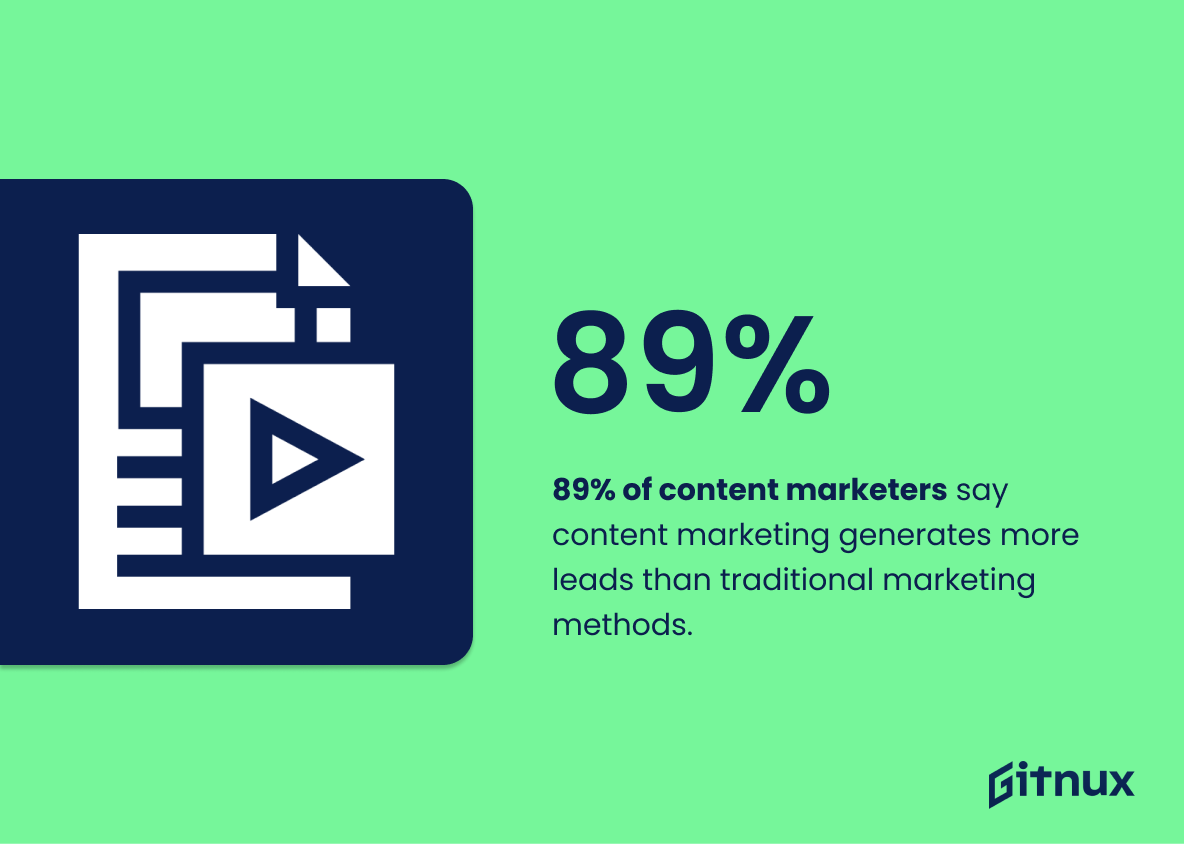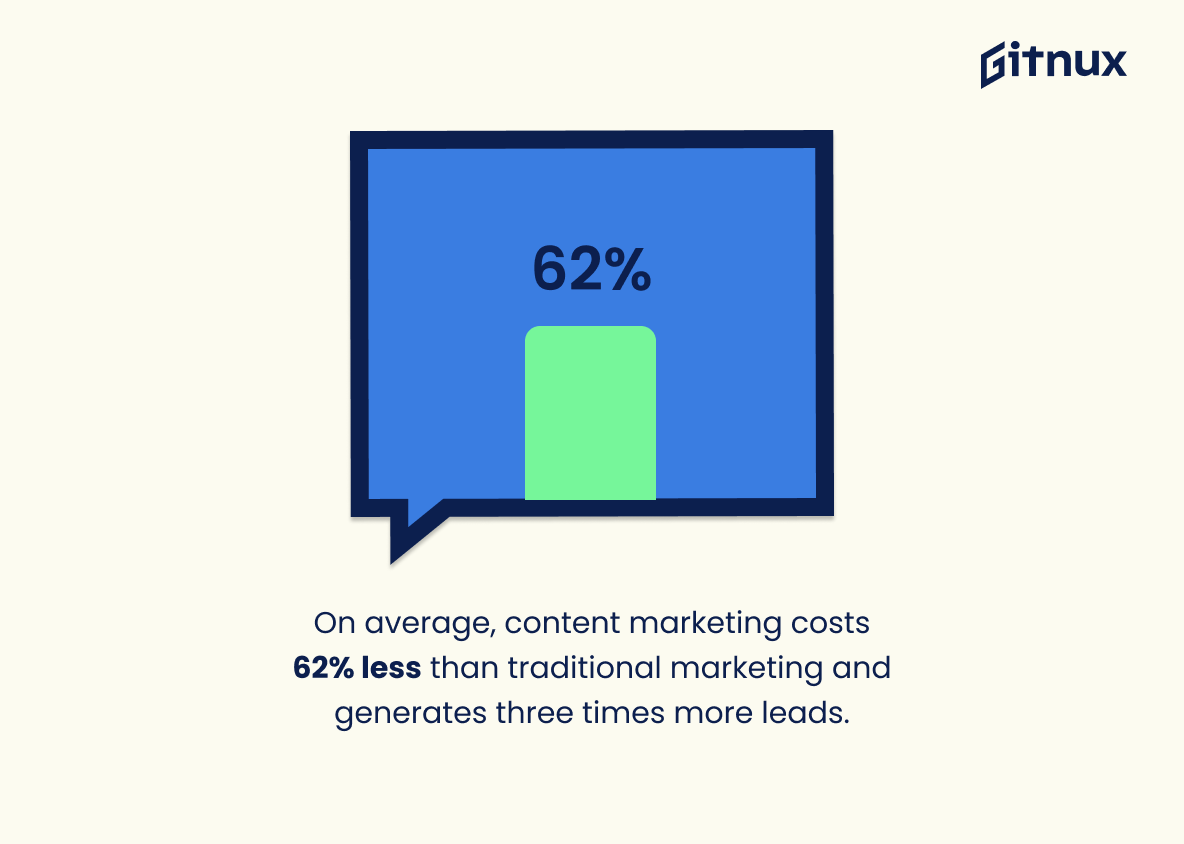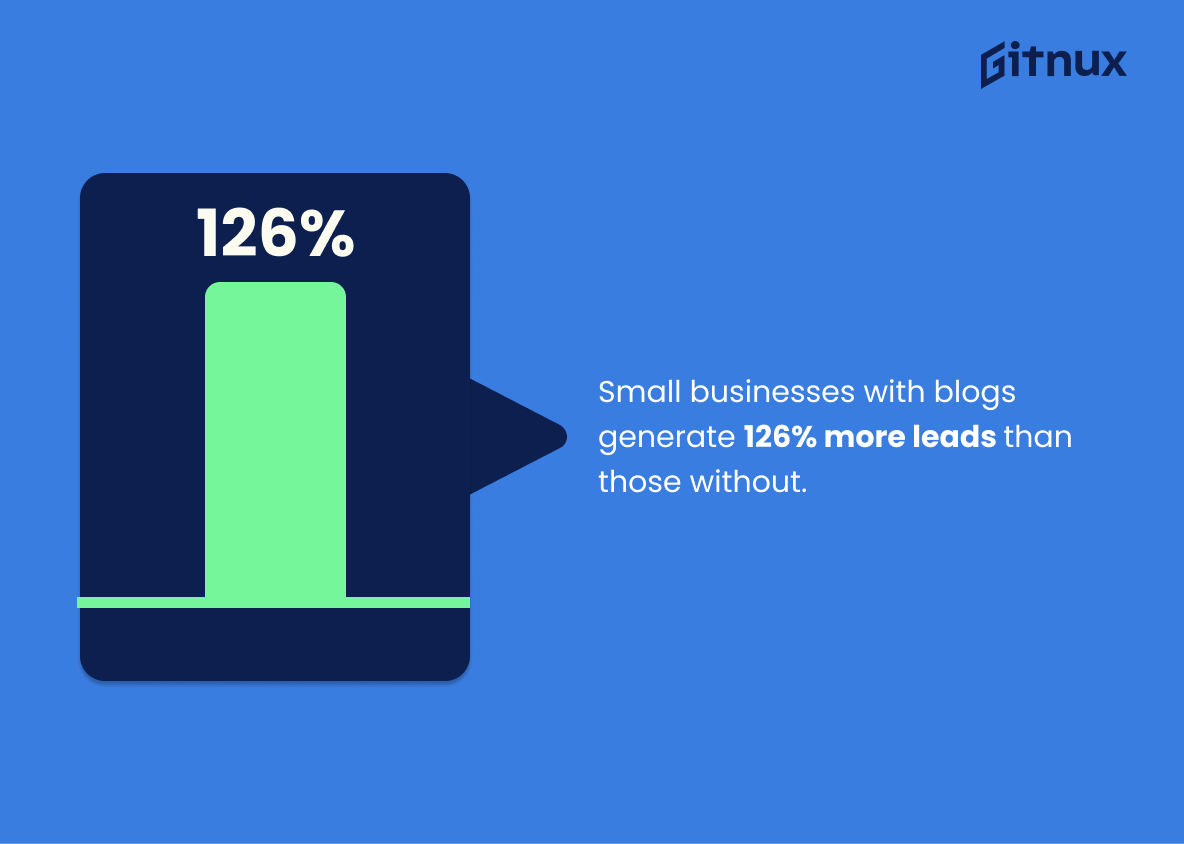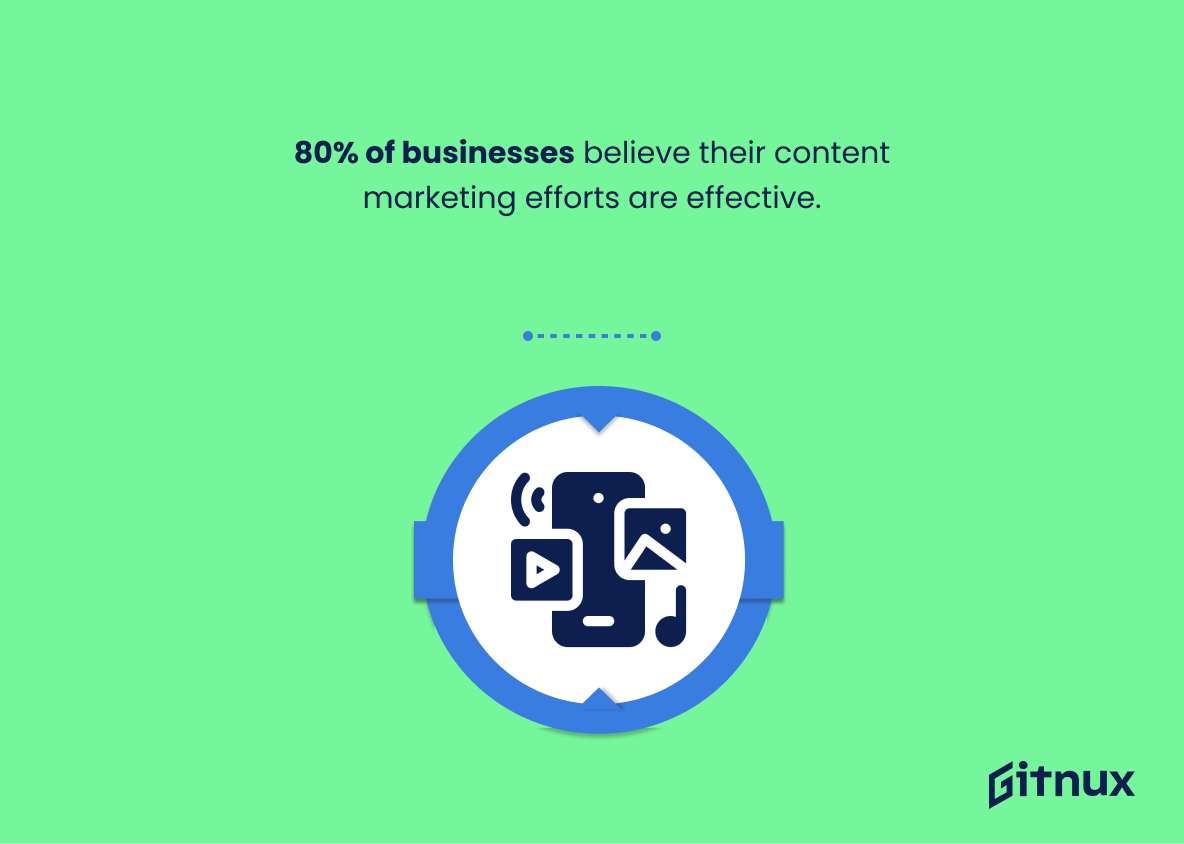Content marketing is a powerful tool for businesses to reach their target audience, build relationships, and drive sales. But, how do you know if your content marketing efforts are actually working? The answer lies in content marketing ROI statistics.
In this blog post, we’ll explore the latest content marketing ROI statistics and how you can use them to measure the success of your content marketing campaigns.
We’ll also discuss how to use these statistics to inform your content marketing strategy and ensure that your efforts are paying off. So, let’s dive in and take a look at the latest content marketing ROI statistics.
Content Marketing ROI: The Most Important Statistics
80% of content created by marketing teams goes unused by sales.
65% of marketers cannot quantitatively demonstrate the impact of their marketing efforts.
Content Marketing ROI: Statistics Overview
Content marketing remains the primary source for increasing ROI in company marketing. By understanding the different ways to calculate ROI, such as click-through rates, conversions, and lead generation, companies can better understand how to maximize their ROI and make informed decisions about their content marketing strategy.
Content marketing is projected to be worth $600 billion in 2024 and has the highest ROI out of all digital marketing strategies, making it an essential part of a brand’s digital marketing strategy.
This shows that content marketing is a viable and profitable option for brands to transition to digital marketing from traditional advertising.
71% of B2B buyers read blog content before purchasing from a brand.
This statistic matters because it shows the importance of creating content that is engaging and persuasive in order to influence purchasing decisions. It is important for businesses to refresh old posts, repurpose evergreen content, identify the customer journey, identify core metrics, and execute a clear strategy in order to maximize their Content Marketing ROI in 2022.
Taking the time to create a strategy that is tailored to the target customers, repurposing and optimizing existing content, and creating a content promotion strategy can help to ensure that the content marketing efforts are successful and generate a positive return on investment.
4.95 billion internet users can be reached, engaged, and converted through content marketing software, and the content marketing industry is growing and competitive.
This matters because understanding the current landscape of content marketing is essential for marketers to make sure their strategies are optimized and can generate the best results. Knowing the size of the market, the competition, and the effectiveness of content marketing software can help marketers make informed decisions about their content marketing strategies and maximize their ROI.
See the best Content Marketing Software
80% of content created by marketing teams goes unused by sales.
This statistic highlights the importance of creating impactful marketing content that is used by sales teams in order to maximize the return on investment. Without effective content, the ROI of content marketing efforts will be significantly diminished.
65% of marketers cannot quantitatively demonstrate the impact of their marketing efforts.
This statistic shows that many marketers are not able to accurately measure the success of their campaigns, which can lead to ineffective strategies and wasted resources. It is important for marketers to be able to measure the success of their campaigns in order to optimize their efforts and maximize their ROI.
For 35% of marketers, understanding the ROI of their campaigns is either very or extremely important.
This statistic highlights the importance of measuring the return on investment (ROI) from marketing campaigns in order to ensure that resources are being allocated in the most efficient and effective manner. By understanding the ROI of their campaigns, marketers can better allocate resources to the channels and campaigns that are performing the best, and make adjustments to those that are not achieving the desired results. With this information, marketers can make decisions to maximize their budget and ensure that their campaigns are delivering the desired results.
For the largest percentage of marketers (38%), content development is the best local link-building strategy that generates the highest ROI.
This information shows that content development is an effective and efficient way to build links and generate a high ROI. It is a great way to drive organic traffic to a website, build relationships with prospects and customers, and establish a brand’s presence on the web. By investing in content development, marketers can boost their visibility, improve their rankings on search engines, and generate more sales.
One study shows that Facebook generates the best ROI among social media platforms.
This statistic shows marketers the best return on investment for their efforts when it comes to social media marketing. It can help inform decisions on where to focus their efforts and budget in order to get the most out of their campaigns. It also provides a benchmark that marketers can compare other social media platforms to determine the relative value of each platform.
Among B2B marketers, the most popular organic social platform is LinkedIn. It is also the one that produced the best results.
This statistic shows that B2B marketers are using the right platform to reach their target audience. By using LinkedIn, B2B marketers are able to target a specific industry and gain access to professionals who may be interested in their products and services. Knowing which platform works best for B2B marketing can help them maximize their reach and increase their ROI.
Although 83% of marketers use metrics to measure the performance of content, only 51% understand how their content is performing, and the remaining 17% either don’t use metrics or don’t know if metrics are tracked.
These numbers highlight the need for marketers to understand how their content is performing in order to effectively measure their content’s performance. Without understanding how their content is performing, marketers are unable to determine if their content is having the desired effect or if it is missing the mark. Additionally, without understanding the metrics associated with their content, marketers risk making decisions based on inaccurate data.
Marketers who prioritize blogging are 13x more likely to drive positive ROI.
This statistic demonstrates the potential payoff of investing in blogging as part of a marketing plan. By investing in a blog and regularly maintaining it, it is possible to drive a positive return on investment. This means that marketers who prioritize blogging can expect to see a return on their investment, and that return can be significant. This statistic is a powerful reminder that blogging can be a valuable component of a successful marketing strategy, and should not be overlooked.
Content marketing costs 62% less than traditional advertising and generates 3x more leads.
This statistic highlights the cost-effectiveness of content marketing compared to traditional advertising. Content marketing is less expensive while at the same time generating more leads, making it an attractive option for businesses looking to save money while increasing their reach.
Check out our latest Content Marketing Statistics
Supplementary Statistics
89% of content marketers say content marketing generates more leads than traditional marketing methods.
This is a more successful method of generating leads than traditional marketing. It is an important statistic to consider when discussing the ROI of content marketing, as it shows that content marketing is a viable and profitable option for businesses.
On average, content marketing costs 62% less than traditional marketing and generates three times more leads.
Content marketing is not only more cost-effective than traditional marketing, but also generates more leads. This is an invaluable insight for any business looking to maximize their ROI and make the most of their marketing budget.
B2B companies that blog generate 67% more leads per month than those that don’t.
B2B companies that invest in blogging are reaping the rewards in terms of increased lead generation. This is an important statistic to consider when discussing the ROI of content marketing, as it demonstrates the potential for businesses to benefit from investing in content creation.
Small businesses with blogs generate 126% more leads than those without.
Small businesses that invest in blogging can reap significant rewards in terms of lead generation. This is an important statistic to consider when evaluating the ROI of content marketing.
80% of businesses believe their content marketing efforts are effective.
It serves as a testament to the effectiveness of content marketing, and provides a strong argument for why businesses should consider investing in content marketing strategies. As such, it is an invaluable piece of information to include in a blog post about Content Marketing ROI Statistics.
47% of B2B buyers consume three to five pieces of content before engaging with a salesperson.
Buyers are actively seeking out content before engaging with a salesperson, and that content is playing a major role in the decision-making process. This highlights the need for businesses to create high-quality content that is tailored to their target audience in order to capture their attention and drive conversions.
Content marketing has a 6-times higher conversion rate than other methods.
It is an invaluable piece of information for anyone looking to maximize their return on investment in content marketing, and is an essential statistic to consider when discussing the ROI of content marketing.
68% of consumers feel more positive about a brand after consuming content from it.
Content marketing can have a positive impact on how consumers perceive a brand, which can lead to increased customer loyalty and higher sales. This is an important statistic to consider when evaluating the return on investment of content marketing, as it demonstrates the potential for content marketing to drive positive results.
60% of marketers create at least one piece of content each day.
The majority of marketers recognize the value of creating content on a daily basis, and are actively investing their time and resources into content creation. This is a strong indicator that content marketing is a viable and effective strategy for businesses to reach their target audiences and achieve their desired ROI.
70% of people would rather learn about a company through an article than an advertisement.
People prefer to learn about a company through an article rather than an advertisement, which suggests that content marketing is a more effective way to reach potential customers. This is an important statistic to consider when discussing the ROI of content marketing, as it demonstrates the potential for content marketing to be a successful marketing strategy.
88% of B2B marketers use content marketing in their marketing strategies.
The majority of B2B marketers have embraced content marketing as a key component of their marketing plans, and are reaping the rewards of its success. This statistic is a valuable addition to any blog post about Content Marketing ROI Statistics, as it provides a clear indication of the effectiveness of content marketing in the B2B space.
53% of marketers say blogging is their top content marketing priority.
Marketers recognize the value of blogging and prioritize it as a key part of their content marketing strategy. This is an important statistic to consider when discussing content marketing ROI, as it demonstrates the potential for blogging to generate a return on investment.
92% of marketers report their organization views content as a business asset.
This statistic is a strong indicator that content marketing is a viable and effective strategy for businesses to pursue.
45% of content marketers publish content at least once per week.
A significant portion of content marketers are actively creating content on a regular basis, which is essential for driving ROI. By understanding this statistic, content marketers can better understand the importance of creating content on a regular basis and how it can help them achieve their desired ROI.
57% of marketers say they’ve gained new customers specifically through blogging.
Blogging can be a powerful tool for gaining new customers, and that marketers are seeing tangible results from their efforts. This is an important statistic to consider when discussing the ROI of content marketing, as it demonstrates that blogging can be a valuable investment.
42% of B2B marketers say they’re effective at content marketing.
This serves as a reminder that content marketing can be an effective tool for businesses to reach their goals. As such, it is an important statistic to consider when discussing content marketing ROI.
22% of content marketers don’t know what their content marketing ROI is.
It highlights the need for content marketers to be aware of the impact their efforts are having on their business, and to be able to measure and track their progress. Without this knowledge, content marketers may be missing out on opportunities to maximize their content marketing ROI.
Content marketing leads to a 97% increase in click-through rate and a 13-time increase in ROI compared to traditional marketing tactics.
This statistic is a powerful testament to the effectiveness of content marketing, demonstrating that it can lead to a dramatic increase in click-through rate and ROI compared to traditional marketing tactics. It is an invaluable piece of information for anyone looking to maximize their return on investment in content marketing, and is a key statistic to consider when discussing the ROI of content marketing.
75% of content marketers are optimizing their emails for mobile devices, resulting in higher ROI.
By optimizing emails for mobile devices, content marketers are able to reach a larger audience and increase their chances of success. This is especially important in today’s digital world, where more and more people are accessing content on their phones and tablets. By taking the time to optimize emails for mobile devices, content marketers can ensure that their messages are reaching the right people and that their ROI is maximized.
Conclusion
Content marketing is an incredibly powerful tool for businesses of all sizes and industries. It can help to increase brand awareness, drive website traffic, and generate leads and sales.
By leveraging the right content marketing strategies, businesses can maximize their ROI and get the most out of their content marketing efforts.
With the right content marketing ROI statistics, businesses can track their progress and make sure they are getting the most out of their efforts.
Content marketing ROI statistics can help businesses understand what works and what doesn’t, so they can make informed decisions and maximize their ROI.
References
Isoline: “Top 15 content marketing ROI statistics in 2022”, cited February 2023. (Source)
OptinMonster: “How to Measure Your Content Marketing ROI + 7 Metrics That Matter”, cited February 2023. (Source)
Content Hacker: “100+ Amazing Content Marketing ROI Statistics That Prove It Works”, cited February 2023. (Source)
Lone Fir Creative: “Why Content Marketing Works (And How To Prove It)”, cited February 2023. (Source)
Bython: “5 Ways to Improve Your Content Marketing ROI in 2022”, cited February 2023. (Source)
Digital Agency Network: “5 Ways to Improve Your Content Marketing ROI”, cited February 2023. (Source)
FinancesOnline: “94 Vital Content Marketing Statistics in 2023: Market Share Analysis & Data”, cited February 2023. (Source)
Showpad: “8 Surprising Stats About the ROI of Marketing Content”, cited February 2023. (Source)
Semrush: ‘Content Marketing ROI: How To Measure Your Success”, cited February 2023. (Source)
ZipDo, cited June 2023: Content Marketing Roi Statistics
